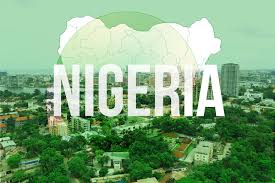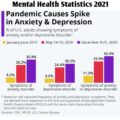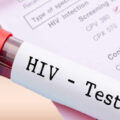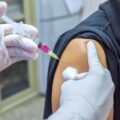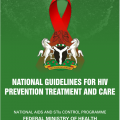According to Avert, Nigeria has the second largest HIV epidemic in the world. Although HIV prevalence among adults is much less (1.3%) than other sub-Saharan African countries such as South Africa (19%) and Zambia (11.5%), the size of Nigeria’s population means 1.8 million people were living with HIV in 2019. Recent drops in prevalence estimates for the country has been attributed to better surveillance. Nevertheless, UNAIDS estimates that around two-thirds of new HIV infections in West and Central Africa in 2019 occur in Nigeria. Together with South Africa and Uganda, the country accounts for around half of all new HIV infections in sub-Saharan Africa every year. This is despite achieving a 13% reduction in new infections between 2010 and 2019. The National Agency for the Control of AIDS says an estimated 51,000 persons living with HIV/AIDS in Nigeria died in the first two quarters of 2020. Unprotected heterosexual sex accounts for 80% of new HIV infections in Nigeria, with the majority of remaining HIV infections occurring in key affected populations such as sex workers.
States With Highest HIV Rate In Nigeria 2020/2021
According to the National Agency for the Control of HIV AIDS in Nigeria, 48 out of every 1,000 persons selected at random in the states are likely to test positive for HIV, South South (Nigeria) was the zone with the highest prevalence, namely 3.1 percent. Overall, the prevalence amongst women aged between 15 and 64 was 1.9 percent as compared to 1.1 percent for men. SEE: HIV Treatment in Nigeria: Everything You Should Know
List of States In Nigeria and their HIV Prevalence Rate 2020/2021
- Akwa Ibom 5.6%
- Benue 4.9%
- Rivers 3.8%
- Taraba 2.7%
- Anambra 2.4%
- Enugu 2.1%
- Abia 2.1%
- Delta 1.9%
- Nasarawa 1.9%
- Edo 1.8%
- Bayelsa 1.8%
- Cross River 1.7%
- Imo 1.6%
- Plateau 1.5%
- FCT 1.5%
- Lagos 1.3%
- Borno 1.3%
- Adamawa 1.3%
- Ogun 1.2%
- Gombe 1.2%
- Kaduna 1.0%
- Kogi 1.0%
- Kwara 1.0%
- Ondo 0.9%
- Osun 0.9%
- Oyo 0.9%
- Ebonyi 0.8%
- Niger 0.7%
- Ekiti 0.7%
- Kebbi 0.6%
- Kano 0.5%
- Zamfara 0.5%
- Yobe 0.4%
- Bauchi 0.4%
- Sokoto 0.4%
- Jigawa 0.3%
- Katsina 0.3%
National Prevalence Rate: 1.4%
Source : NACA
While speaking with on the trends of HIV prevalence across Nigeria, the Director-General of NACA, Dr Gambo Aliyu, said: “This is largely first because of behaviour. The second reason is culture. If you look at North Africa, you will see that the prevalence of HIV is very low simply because of religious and cultural influence. Even here in Nigeria, if you look at the far North, you will see that the prevalence is low because of the way of life and cultural and religious influences. SEE: How Much Does HIV Test Cost In Nigeria?
“If you look at some communities nationally, because of culture and behavior, you will see that the prevalence is very high because of the way people live, interact, and the way they socialize.
“These are very important. The last is education. It is not the level of education that a person has but the level of education that individuals have in terms of awareness about the disease, in terms of prevention measures, and in terms of the ability to use those prevention measures. It is one thing to know that this thing works in preventing HIV and it is another thing to use it.”
The NACA boss, however, stated that the agency is re-strategizing to ensure that everyone who is HIV positive is identified and immediately placed on treatment to contain the spread of the epidemic and keep them alive. This way, Nigeria will be well on its way to achieving the Joint United Nations Programme on HIV/AIDS (UNAIDS) target of ensuring that 95 per cent of the population know their HIV status, are placed on treatment and have suppressed viral loads by 2030. SEE: Complete List of Free HIV Treatment Centers in Nigeria


